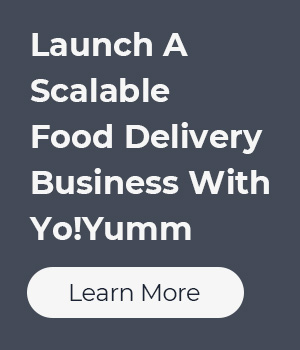Last Updated: 10th May, 2022
The online food delivery market is evolving and expanding at a drastic scale. The unprecedented growth of the food delivery industry extends a plethora of opportunities for businesses to start an online food delivery marketplace.
As per a report by Uber, the food delivery market is expected to grow 10% a year to be worth $25bn in Europe by 2023. Technological advancements have turbocharged the adoption of online food delivery services among customers and this has been the major reason for several entrepreneurs to flee towards the online food delivery market.
Strategizing the business model is one of the initial requirements for starting a new business. It is highly advisable for businesses to analyze the market, define the target audience, set business goals, and accordingly choose the business model for their online food delivery business.
Entrepreneurs should be familiar with various online food delivery business models existing in the market to make a well-informed decision. In this blog, we will discuss different business models for online food delivery business and guide you to choose the right one for your venture.
Table of Contents
Different Types of Food Delivery Business Models
There are two major food delivery models that dominate the online food ordering and delivery industry. Most of the leading food delivery businesses function in accordance with one of the below-mentioned models.
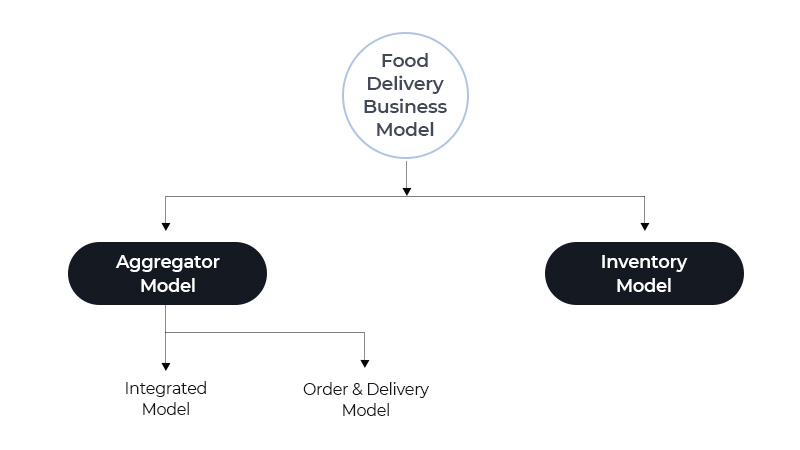
Aggregator Business Model
As the name suggests, online food delivery businesses based on the aggregator model allow multiple restaurants to register and function on a single food delivery platform. This business model aggregates services offered by various restaurants and conglomerates them into a single portal. The platform acts as an intermediate between customers and restaurants in this model.
Just Eat, Delivery Hero and Uber Eats are a few of the big names in the food delivery industry that have adopted the aggregator model, and needless to say, their growth has been exponential. So, if you plan to launch a food delivery platform like Just Eat and Delivery Hero, you should choose the aggregator business model.
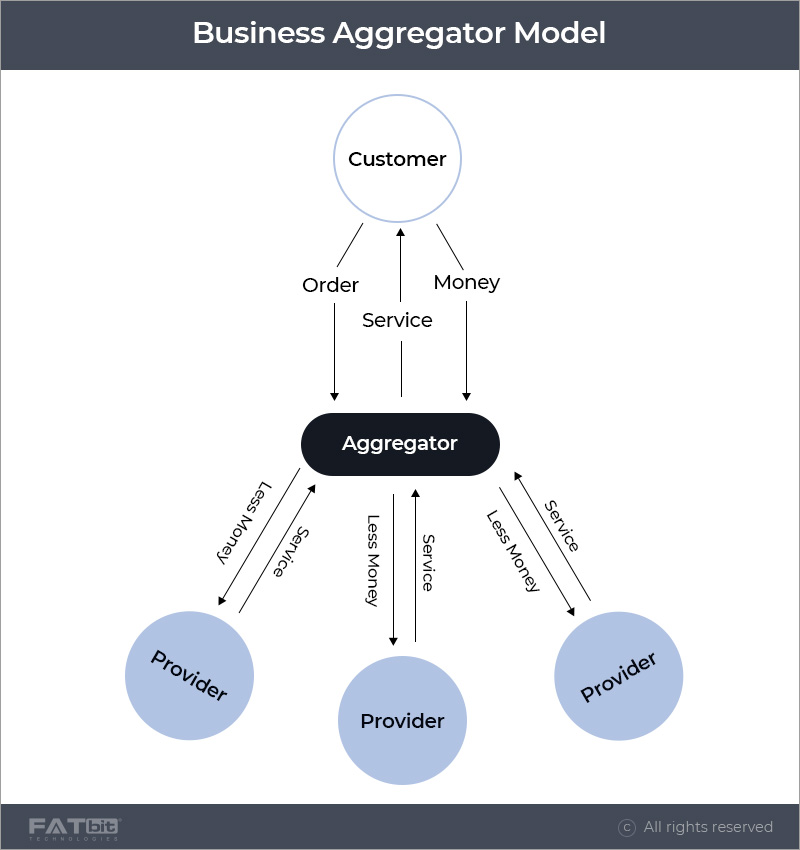
Based on the delivery operations, the aggregator food delivery model is further classified into two business models.
-
The Order and Delivery Model
There are three major entities involved in this business model i.e, Admin or platform owner, merchants or restaurant owners, and a delivery service provider. In this business model, food delivery is taken care of by the third party. The delivery service provider is usually a courier or logistics company that collaborates with the platform owner to provide food delivery to the customers. The delivery charges on orders are set by the delivery service provider.
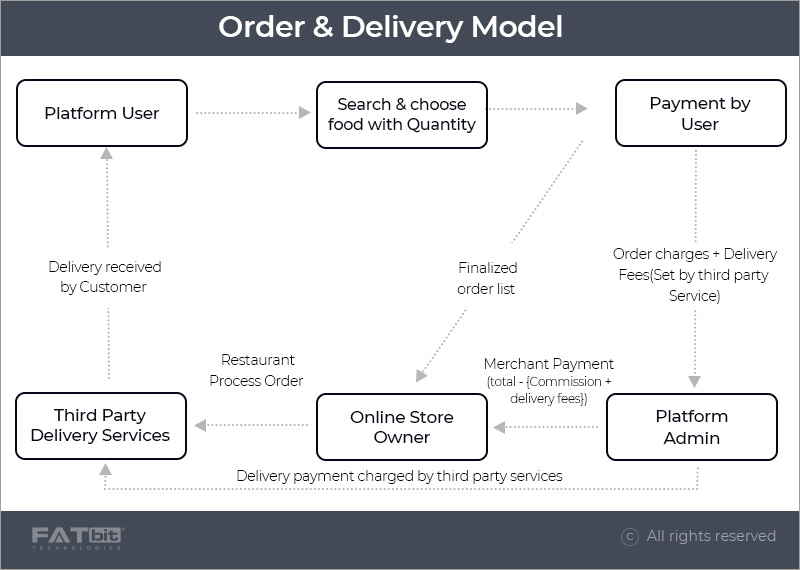
Advantages of Order & Delivery Model
Choosing this food delivery business model would be extremely beneficial for businesses that do not want to invest in employing a delivery fleet. The platform owner or admin partners with a courier service and assigns all the food delivery related functions to it. Since the order deliveries are managed by the third-party logistics service, the portal owner doesn’t have to be concerned about managing deliveries.
Also, since the third-party logistics service is solely dedicated to providing delivery, the admin can ensure on-time & efficient food delivery practices.
Challenges in Order & Delivery Model
The biggest challenge faced by businesses with the order & delivery business model is aligning the delivery process with all other processes on the food delivery platform and onboarding various delivery agents from the logistics service.
The integrated food delivery model is flexible and the most sought after business model in the industry. In this model, delivery can be managed by both admin and restaurants.
Many restaurants have their own pool of delivery agents and all they want is a platform to bring their offerings online. Online food ordering platforms functioning in accordance with the integrated model can easily cater to such restaurants.
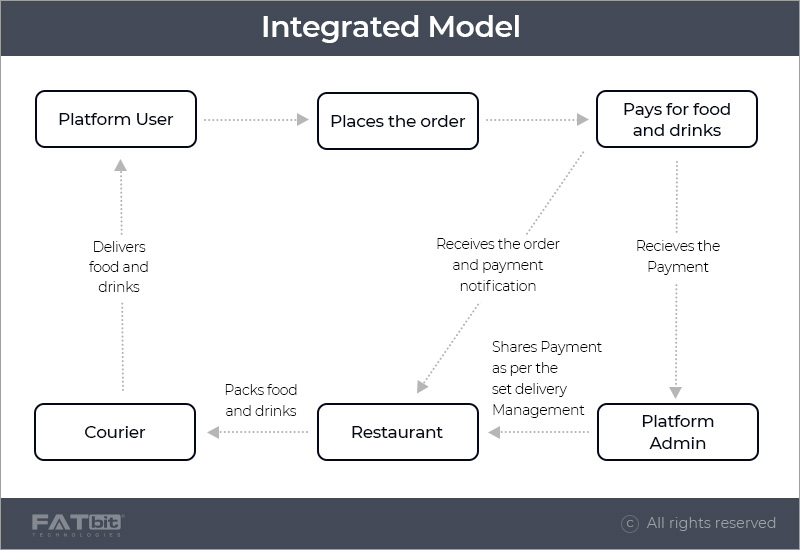
Make sure that the food delivery solution you choose has functionality for restaurants to seek approval from admin to activate delivery services to “Self” so that the admin can easily see it on the dashboard whether the delivery is managed by the restaurant or admin himself. When a customer places an order from a restaurant, the admin checks if that restaurant has enabled the self-delivery option or avails the platform’s delivery services and then accordingly manages the delivery.
Looking for an easy & hassle-free way to start a food delivery business?
Advantages of Integrated Model
This food delivery business model would help the platform owner to overcome the uncertainties of launching a new business. The integrated model allows restaurants with or without the delivery fleet to be on the food delivery marketplace and function effectively. This business model makes way for a wider range of food outlets to be on the platform which in turn increases the number of choices for customers in terms of dishes and restaurants.
Challenges in Integrated Model
The major challenge faced by the food delivery businesses based on the integrated model is to streamline the delivery operations and assign delivery of every order as per the availability of fleet with the restaurant. To overcome this challenge, entrepreneurs should look for a feature-packed online food delivery solution that enables the admin to easily assign the delivery management to the restaurants.
Inventory Business Model
In the inventory model, the online food delivery business does everything in-house. There is only one entity involved here. From launching the food delivery website/app to preparing orders and delivering food to the customers, everything is done by the food delivery company. The platform owner controls the complete value chain.
The food delivery business model doesn’t allow multiple restaurants to offer their services on a single platform. The order is cooked at the centralized kitchen owned by the business and is delivered by the courier service hired by the business. So the food delivery business owner can easily keep a check on the food quality.
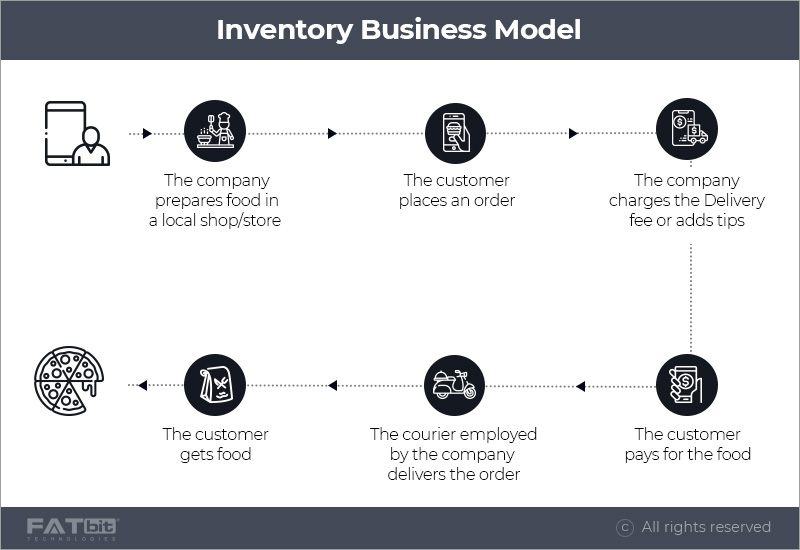
The inventory model is usually adopted by food businesses with multiple restaurant chains like Domino’s, Burger King, and McDonald’s. So, if you already own a chain of restaurants and want to bring your offerings online via a website or app, you can choose the inventory model.
Advantages of Inventory Model
The main advantage of choosing the inventory model is that you don’t have to rely on a third-party food delivery platform. For businesses having a chain of restaurants in a city with a delivery fleet of their own and looking to build their online presence should choose the inventory model. Such businesses can launch a website or a food delivery platform for their restaurant branches and cater to the customers wanting to place online orders from their food outlets. By doing so, they can save the commission paid to the third-party platform and have complete control over defining the overall customer experience.
Challenges in Inventory Model
High operational costs is the major setback for food delivery businesses based on the inventory model. Also, it becomes difficult for the kitchen staff to simultaneously cater to the online as well as dine-in orders. The business owner should choose a food delivery software that enables him/her to seamlessly manage both online and offline operations.
Why Integrated Model is the most lucrative food delivery business model?
When an entrepreneur starts an online food delivery business, he/she may encounter uncertainties in terms of revenue, growth, and acceptance by customers. Also, the entrepreneur while launching the food delivery marketplace is unsure of the number of restaurants that would join the marketplace. In such a case, it is not recommended to invest a huge amount in hiring a delivery fleet. It is advisable to hire a few delivery agents at the beginning and increase the number as your business starts to scale.
Since the integrated model enables both the admin and restaurants to manage food delivery, it is the most preferable food delivery business model.
Whether the restaurant owns a delivery fleet or not, the integrated model provides flexibility to manage food delivery as per their convenience.
There are several platforms functioning as per the integrated food delivery business model and driving exponential growth in the market. DoorDash is one such food delivery marketplace that has established itself as the leader in the US food delivery market and accounted for 45% of all food delivery orders in the US in 2020.
To capture the untapped opportunities in the food delivery market and achieve a velocity that brings your business to a growth trajectory, you must understand and address the challenges faced by the restaurants.
Restaurants would want to be on your food delivery platform only if your platform adds value to their business by providing solutions to their core problems.
As customers around the world are limiting their visits to restaurants and food outlets due to the restrictions posed by the COVID-19 pandemic and switching to online food ordering, restaurants are required to respond to this new normal with effective means. Two major roadblocks faced by restaurants to navigate through the pandemic are:
- Unavailability of resources to bring their offerings online
- Unavailability of courier service to provide food delivery to customers
The integrated food delivery business model enables you to address both the above-mentioned problems faced by restaurants. Restaurants having their own delivery fleet would want to be on your food delivery platform to expand their customer reach and the restaurants with no availability of courier services would connect with the food delivery platform to leverage the delivery service. The integrated food delivery business model serves both purposes either separately or collectively. Therefore, setting up an online food delivery platform based on the integrated business model can help you connect with a large number of restaurants laying the foundation for sustainable business growth.
Following are some more factors that make the integrated food delivery business model the most sought after one.
- Admin exercises control over delivery service (Restaurant requires approval from admin to enable self-delivery option)
- An additional Revenue Stream – Delivery Fee
- Admin can ensure timely delivery and the service quality
- Geo-Fencing
How Integrated Food Delivery Business Model Works?
Before starting an online food delivery business, you should invest a good deal of time in conducting the market analysis. It is of utmost importance to make well-informed decisions at the early stages of starting a business. To offer additional value to your customers, you must be aware of the processes adopted by the current market leaders.
To help you build a better understanding of the work-flow involved in the integrated food delivery business model, we are explaining the delivery process through the functions performed by various stakeholders in managing the food delivery.
Admin
- Admin creates an account for delivery agents owned by himself.
- Admin has the provision to enable/disable the delivery service provided by restaurants.
- Admin sets up the delivery charges for the deliveries done by admin’s delivery agents.
- The order is broadcasted to all the delivery agents present in the delivery range of the restaurant.
- If the order is not accepted by any delivery person, Admin can assign it to any particular delivery agent. (In case the delivery is managed by the admin)
Merchant
- The merchant creates an account for the restaurant’s delivery agents (associated with a single restaurant or a restaurant chain)
- The merchant enables the ‘self-delivery’ option to manage the order deliveries.
- The delivery fee is set by the merchant for deliveries done by the restaurant’s delivery agents.
- Every restaurant owner sets up a delivery range for their restaurants.
- When the restaurant accepts an order, the order status tracked by the customer is changed to “Accepted”.
- Then the restaurant prepares the order and updates the status to ‘Ready for pick-up’.
- The restaurant owner is responsible to assign the order to a particular delivery agent in case no delivery staff accepts the order on broadcasting. (When the delivery is managed by the restaurant)
Delivery Staff
- The delivery agents present in the delivery range of the restaurant get notification about the incoming orders.
- Once the order is accepted by a delivery person, the order status is automatically changed to ‘In-Preparation’.
- The assigned delivery staff picks up the order after receiving the notification that the order is ready for pick-up.
- The delivery agent can then update the status to ‘Order picked-up’.
- When the delivery person sets out to deliver the food to the customer, the portal tracks his/her route.
- When the delivery personnel covers half the distance, the system sends an in-app notification stating ‘your order is on the way’ to the customer.
- After delivering the order, the delivery person changes the order status to ‘Delivered’.
Customers
- Customers can track their order status through regular updates.
- Also, most of the online food delivery solutions enable Live Tracking for customers to track their orders in real-time.
Online Food Delivery Business Model Canvas
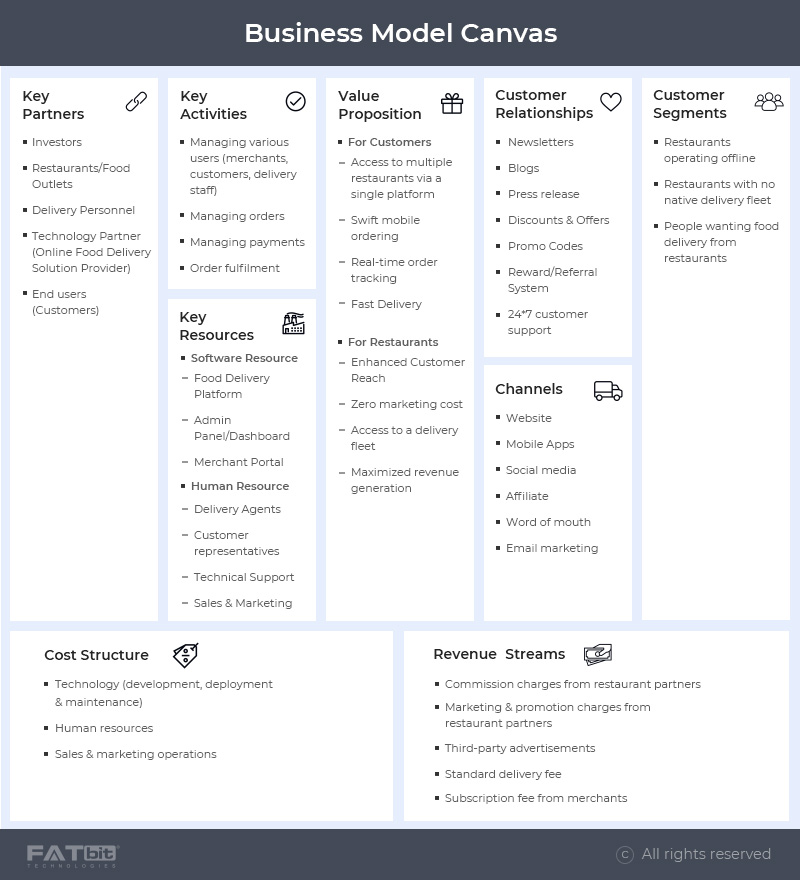
Key Differentiators of Yo!Yumm Based Food Delivery Business Model
Once you decide on the food delivery business model that meets your business requirements and facilitates you to achieve the set business goals, the next step is to choose a viable multi-restaurant delivery software.
As we discussed earlier in this blog, the integrated model empowers your food delivery business to easily cater to the varied requirements of restaurants. Therefore, we would suggest you choose a robust and advanced solution like Yo!Yumm, which is designed to function as per the integrated food delivery business model and is equipped with remarkable features.
There are multiple factors that make Yo!Yumm the best fit to start and scale your food delivery business. Following are the most notable ones:
- Hasslefree management of delivery
One of the biggest challenges for online food delivery businesses with the integrated model is to streamline the delivery management processes as managing delivery may prove to be a complex task with both restaurants and the admin involved in it. Yo!Yumm enables businesses to encounter the complexity of managing deliveries with its advanced functionalities. Restaurants can easily enable the self-delivery option on the portal and the admin gets notified about the same. So, when an order is received, the admin can check whether the food is to be delivered by the restaurants’ delivery person or the admin’s delivery staff. Hence, delivery management becomes a hassle-free affair with Yo!Yumm.
- Real-time delivery tracking
Yo!Yumm is integrated with Google Maps which enables customers to track their orders in real-time. When the delivery personnel picks up an order from the restaurant, both the restaurant and customer can track his/her route and know the exact location of the delivery person. The real-time delivery tracking feature of Yo!Yumm helps you deliver an exceptional food ordering experience to the customers.
- Order status update through in-app notifications
Yo!Yumm is a competent food delivery software designed with a user-centric approach and an advanced technology infrastructure. The solution enables in-app notifications to provide timely order status updates to the customers. The system sends regular notifications to keep various stakeholders updated at every stage of the food delivery process.
Yo!Yumm is integrated with multiple payment gateways enabling you to provide flexible payment options to customers. As the solution supports a wide range of payment options, customers can choose to pay via any mode i.e, Credit Card, UPI, Net Banking, Debit Card, and many more.
Get assistance to choose the right food delivery business model for your startup
Final Thoughts
It’s fair to say that the business model you choose plays a significant role in determining the business growth as it defines the course of operations for a business. Therefore it is of utmost importance to choose the right food delivery business model for your startup. You must consider factors like – convenience delivered to customers, alignment with your business goals, and the scope of technological advancements before deciding on the business model as well as the food delivery solution.
As technology is disrupting the online food delivery industry, we recommend you to choose a technology-enabled food delivery solution like Yo!Yumm which empowers you to meet customers’ tailored demands and changing preferences.
Yo!Yumm is one of the finest online food delivery solutions based on the integrated model with phenomenal features and functionalities. If you are looking to build an on-demand food delivery app with flexible delivery options, we would advise you to check out Yo!Yumm’s demo to understand how the solution provides complete ease of management to different sets of users i.e, admin, merchants, delivery staff, and customers.







